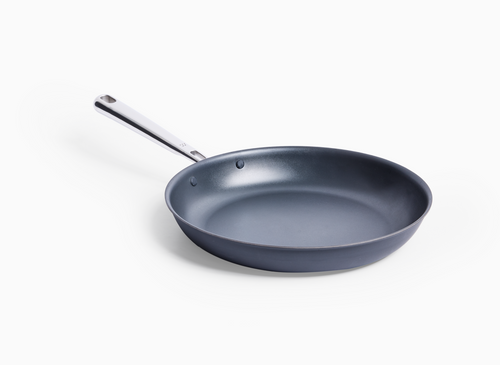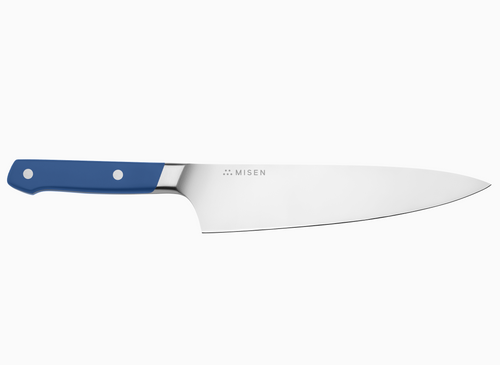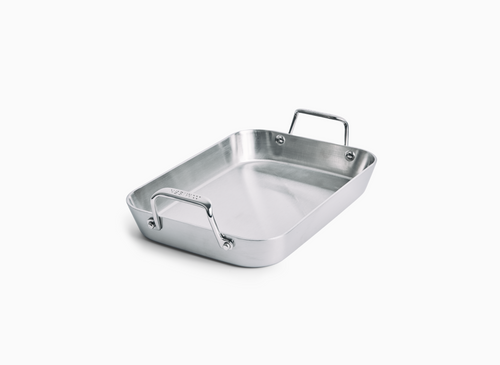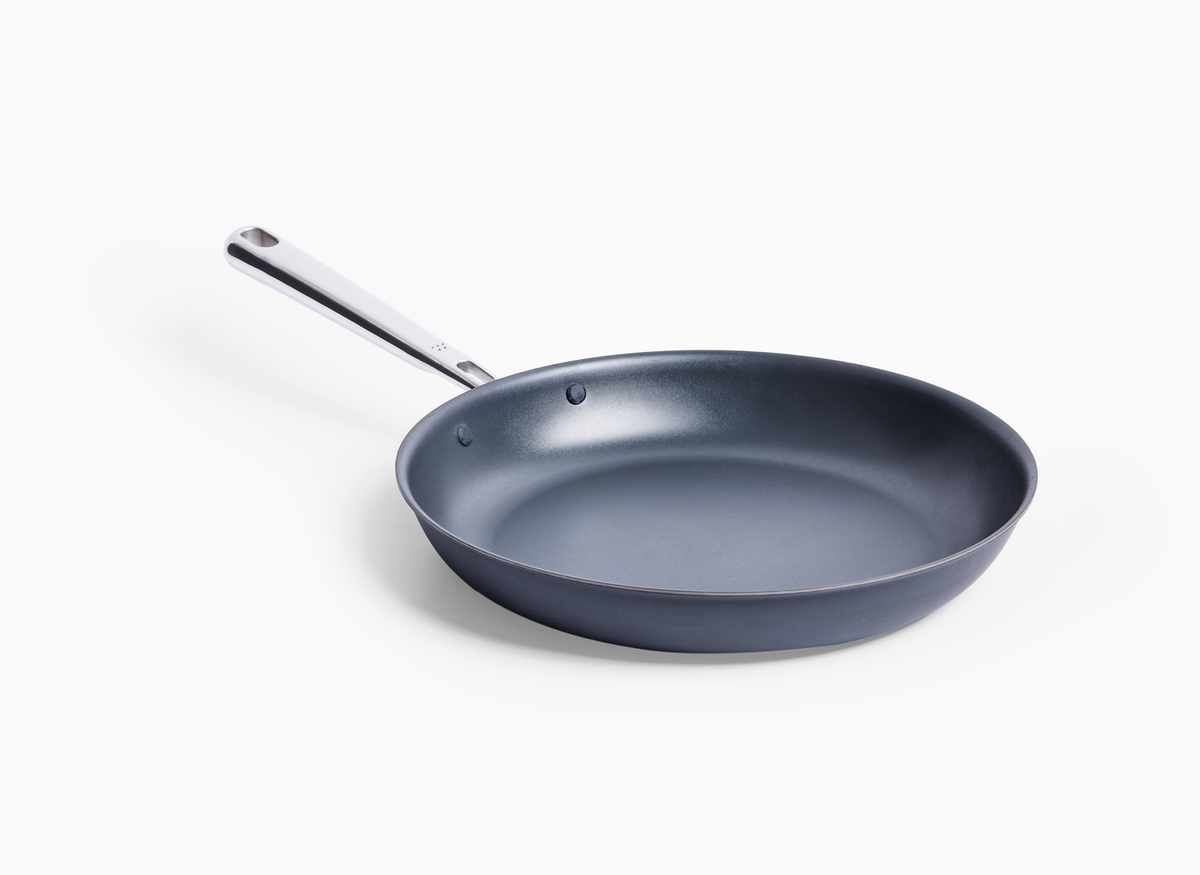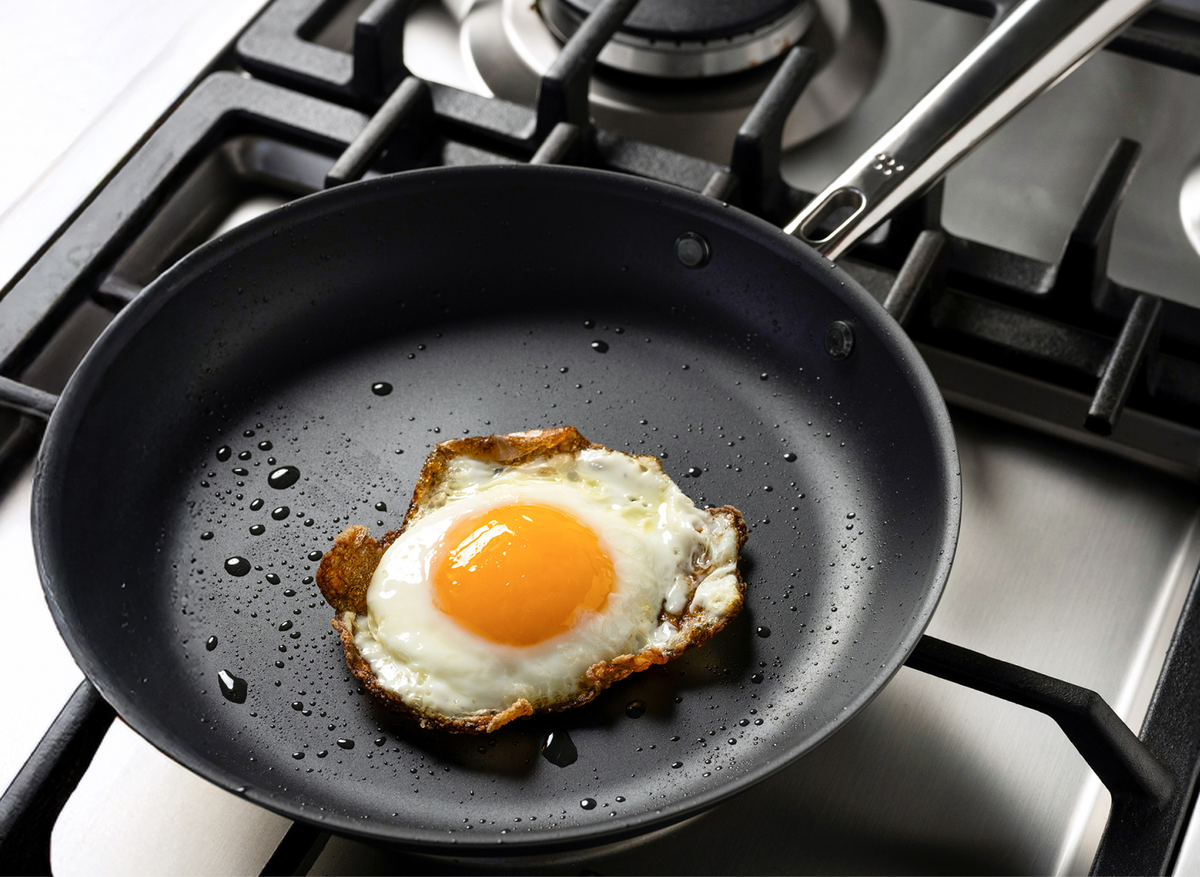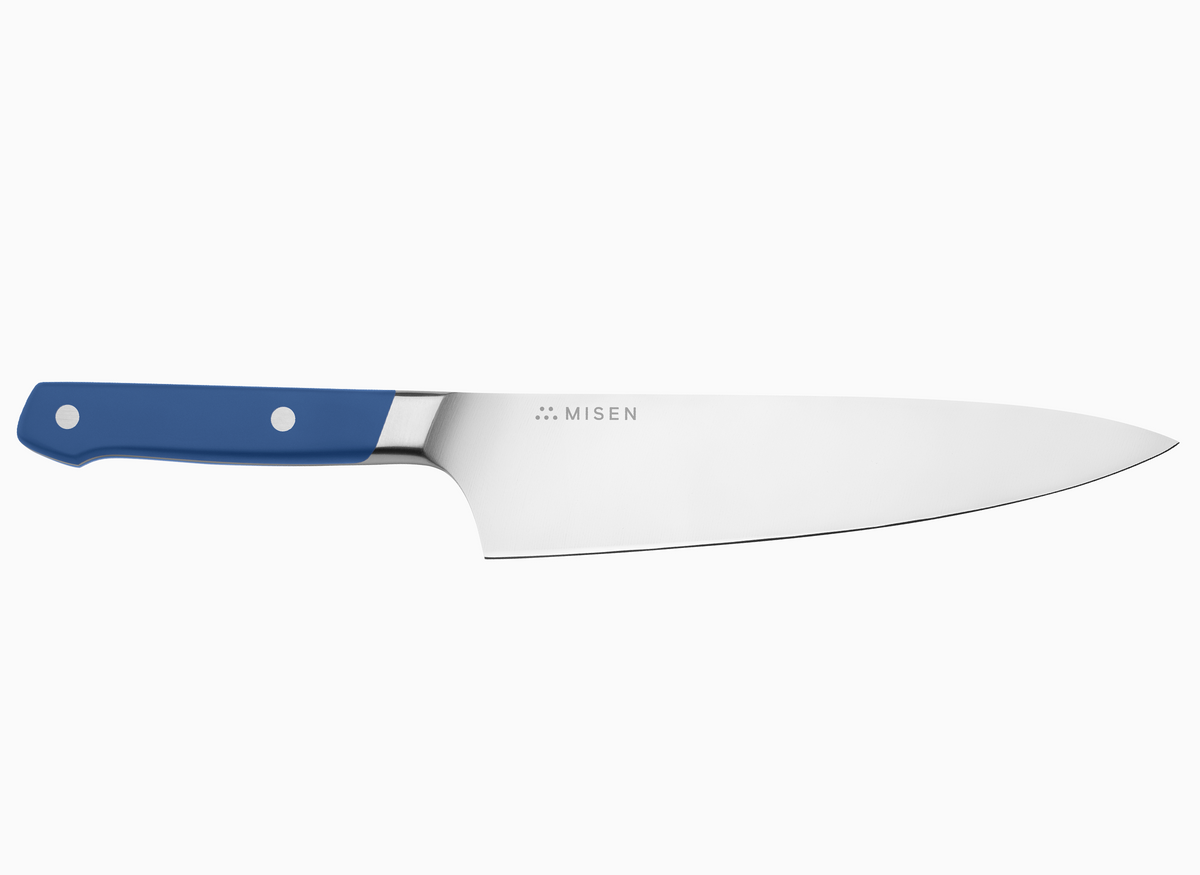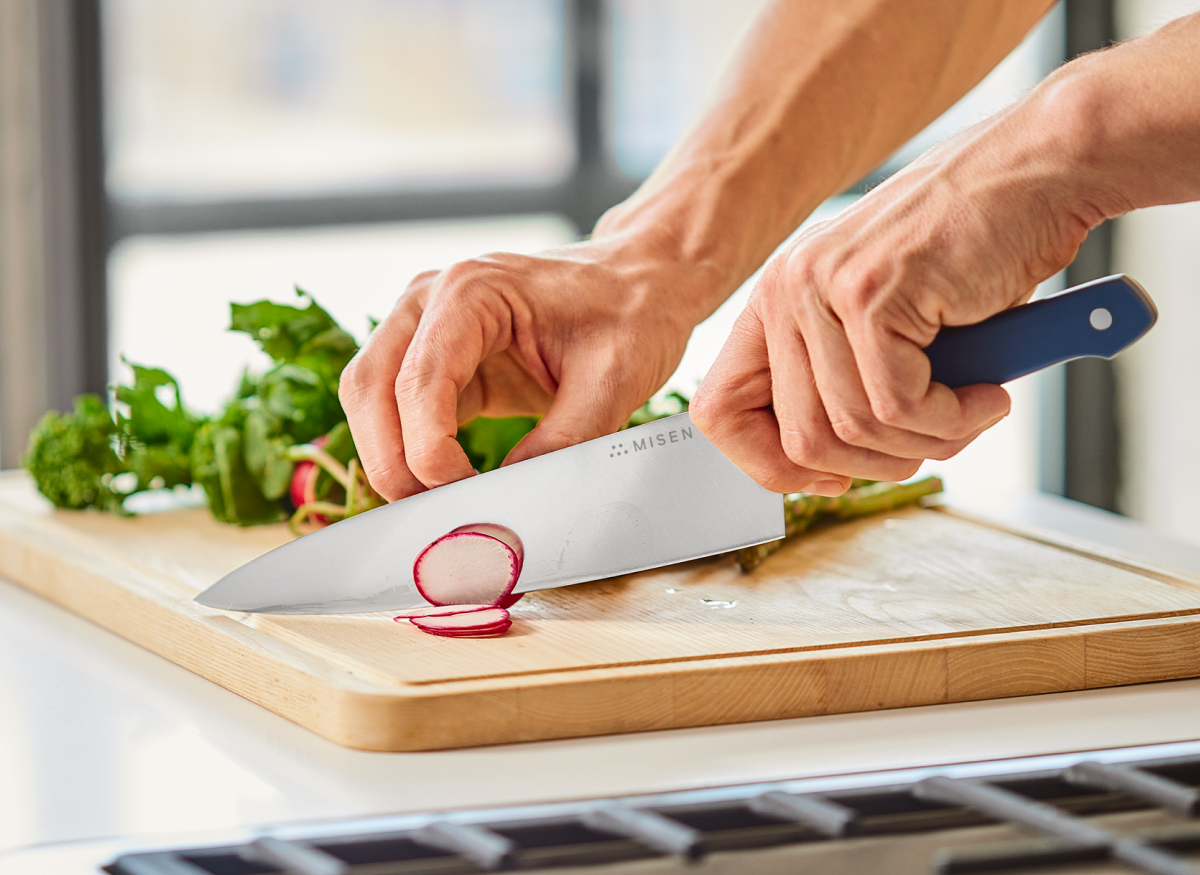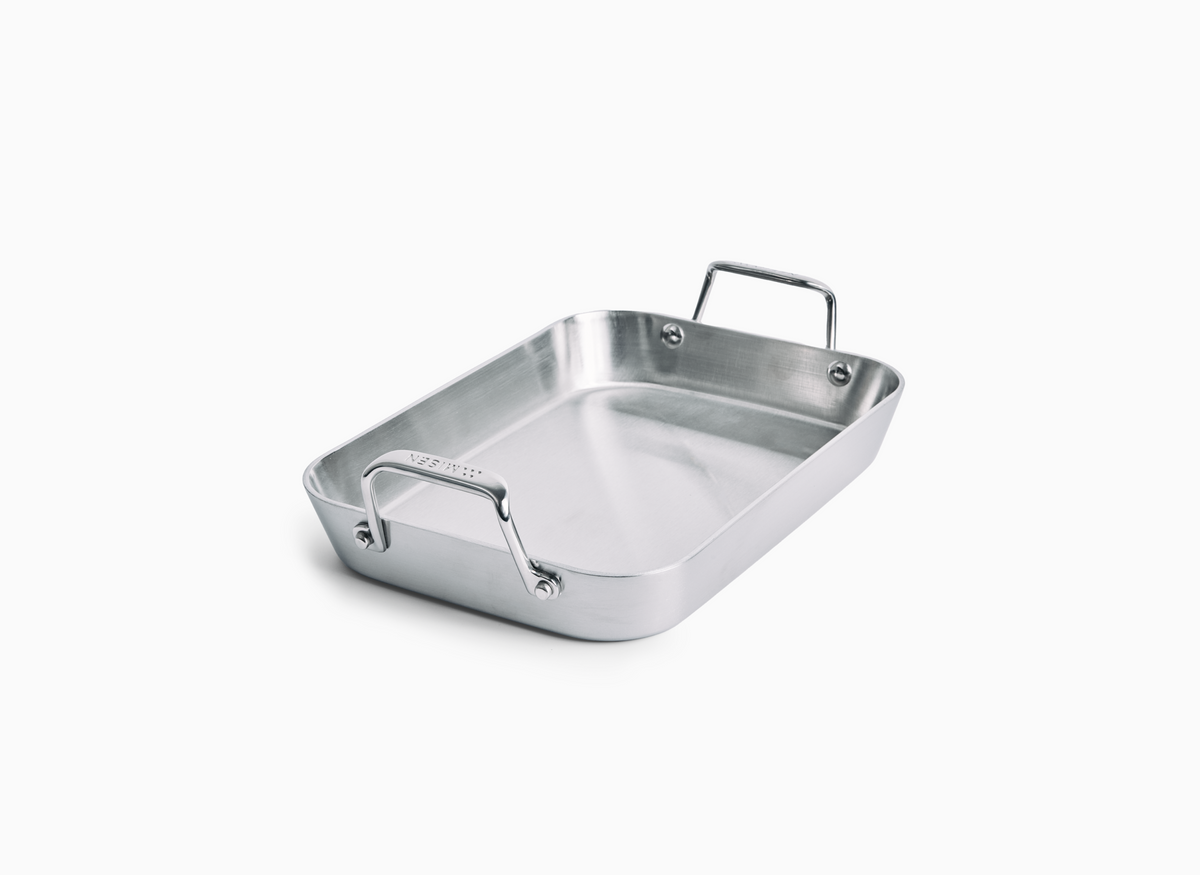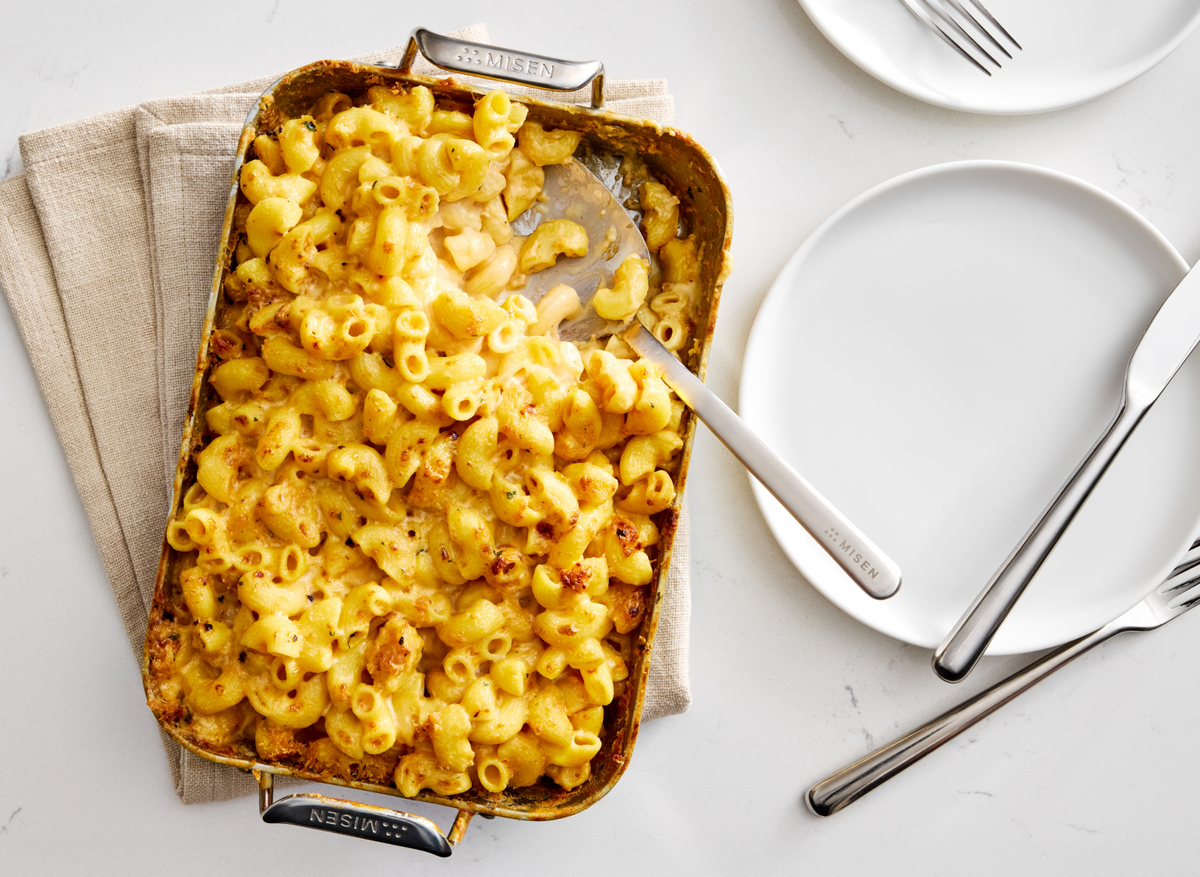Knife Anatomy Basics: A Comprehensive Guide to Every Part of a Knife

The Core Components: Blade and Handle
Blade and handle work in perfect tandem to deliver precision and balance; elevate your culinary tools by visiting
The two primary divisions of every knife
At its most basic, a knife consists of two main parts: the blade for cutting and the handle for gripping [1]. These components work in tandem, with the blade's tang extending into the handle to create a secure connection. The tang's design - whether full-width or narrower - impacts the knife's overall strength and balance.
How these components work together
A well-designed knife achieves harmony between blade and handle through careful engineering. The balance point, where the knife remains level when supported, significantly influences control and fatigue during use [3]. This interplay between components directly affects ergonomics - a properly balanced knife reduces hand strain and enhances precision, becoming a natural extension of the cook's movements [4].
Balance point and its importance
The balance point of a knife is where its weight naturally rests when held, directly impacting control and comfort [5]. While there's no universally ideal balance, different knife types require specific weight distributions to optimize their function. For instance, our Carbon Steel Pan benefits from a slightly forward balance to aid in precise temperature control and even heating. Similarly, knife balance varies by type - Japanese vegetable knives often have a forward balance for push cutting, while Western chef's knives may work best with slight handle-heaviness for rock chopping motions [6].
Transition areas between blade and handle
The junction between blade and handle contains several critical elements that contribute to a knife's functionality and durability. The bolster reinforces this high-stress area while protecting the handle material [7]. In front of the bolster lies the ricasso - an unsharpened, thickened portion of the blade that allows for full sharpening without damaging the guard or handle [14]. The choil marks the start of the cutting edge, while the tang's design (full or hidden) impacts overall strength at this crucial transition point.
Breaking Down the Blade
Discover how precise blade geometry creates superior cutting performance; transform your cooking experience by visiting Shop Cookware.
The point: Types and functions (clip point, drop point, etc.)
The knife point is a critical feature that determines cutting capabilities and specialized functions. Drop points offer versatility with a controlled tip and ample belly for slicing, making them ideal for general use [8]. Clip points have a distinctive cut-out section on the spine, resulting in a fine tip for detailed work. Tanto points feature an angular transition rather than a curved belly, creating an extremely strong tip optimized for piercing tough materials.
The edge: Primary cutting surface and edge types
The knife edge serves as the primary point of contact between blade and material, making it critical for overall performance [10]. Three main edge types exist: V-shaped (straight), wavy (serrated), and saw-tooth edges. The V-shaped edge, most common on kitchen knives, creates clean cuts through a symmetrical double-bevel design. Serrated edges excel at cutting foods with tough exteriors and soft interiors, like crusty bread or tomatoes.
The spine: Purpose and variations
The spine runs along the top edge of the blade opposite the cutting edge, providing structural support and control during use. This thickened section adds rigidity while remaining dull, allowing users to safely place their hand on top for additional pressure and precision [12]. The spine's thickness directly impacts blade performance - thicker spines increase durability but add weight, while thinner spines enhance slicing ability but reduce overall strength.
Secondary blade features: Heel, ricasso, fuller, and jimping
The heel marks the rear portion of the blade's cutting edge, providing a stable base for chopping and heavy cutting tasks [15]. The ricasso strengthens the critical blade-to-handle transition area while providing a safe unsharpened section for blade maintenance [14]. A fuller, sometimes incorrectly called a 'blood groove', runs parallel to the spine and functions like an I-beam to reduce weight while maintaining strength. Jimping consists of ground notches typically placed on the blade spine or handle to provide enhanced grip traction for the user's thumb or fingers.
Understanding the Handle
Embrace innovative handle designs that enhance comfort and control; elevate your kitchen experience by visiting Shop Knives.
The bolster: Transition and balance
The bolster serves as a critical transition point between blade and handle, providing multiple essential functions. This thickened metal section acts as a protective buffer between the user's fingers and the sharp edge while adding weight for improved balance [16]. When properly designed, sloped bolsters enable a precise pinch grip and provide extra leverage when working with meat or fish by allowing downward pressure.
The tang: Full tang vs. partial tang construction
The tang - the metal extension of the blade into the handle - fundamentally impacts knife strength and durability. Full tang knives feature a single piece of steel running the complete length and width of the handle, creating the strongest possible construction by eliminating weak attachment points [18]. While full tang knives offer superior durability for heavy use, they add weight and can feel uncomfortably cold in extreme conditions. Some manufacturers use hybrid approaches like skeletonized tangs that maintain full length while reducing weight by removing internal material.
Handle scales and materials
Handle scales are the outer grip portions attached to either side of a knife handle, working in conjunction with the internal liners and backspacer to create the complete handle assembly [20]. Modern knife handles utilize diverse materials that each offer unique benefits. Synthetic materials like G-10 fiberglass laminate deliver excellent grip through texturing while remaining impervious to corrosion. Traditional natural materials like wood provide classic aesthetics and good grip, though they require more maintenance and can be affected by moisture.
The butt/pommel and its functions
The butt or pommel is the end portion of the knife handle that serves multiple functions. Located at the opposite end from the blade point, the pommel provides crucial balance and weight distribution while also protecting the handle material from impact damage [22]. For knives with hidden tang construction, the pommel is drilled and tapped to thread onto the tang end, creating tension that solidifies the entire handle assembly. A stout pommel design allows the knife to be used for hammering tasks like pounding tent stakes.
Anatomy Differences Across Knife Types
Explore the diverse design features that distinguish knife types; enhance your collection by visiting Shop Cookware.
Fixed blade vs. folding knife anatomy
Fixed blade and folding knives differ fundamentally in their construction and component layout. Fixed blades feature a solid piece of steel that extends from tip to handle, utilizing either tang or full-tang construction [23]. This makes fixed blade knives inherently stronger and more durable for heavy-duty tasks. Folding knives incorporate additional moving parts and locking mechanisms to enable blade storage, requiring regular maintenance to prevent debris accumulation and ensure smooth operation.
Kitchen knife variations: Western vs. Japanese design differences
Western and Japanese kitchen knives differ fundamentally in their blade geometry and construction. Western knives typically feature symmetrical double-beveled edges sharpened on both sides, making them ambidextrous, while traditional Japanese knives historically used single-beveled blades designed specifically for right- or left-handed use [24]. The steel composition also varies significantly - Japanese knives typically use harder steel with higher carbon content, while Western knives employ softer steel that's less brittle.
Specialized knife features for specific uses (hunting, tactical, chef's)
Different knife types incorporate specialized features to excel in their intended applications. Hunting knives often include gut hooks for skinning and sturdy blades optimized for precision field dressing tasks [26]. Tactical knives prioritize rapid deployment and durability, featuring serrated edges for cutting through tough materials and non-reflective finishes for stealth operations [27]. Chef's knives show distinct variations between Western and Japanese designs, with differences in steel hardness, edge geometry, and blade profiles optimized for specific cutting techniques [28].
How to identify quality construction across different knife types
Quality knife construction reveals itself through several key indicators. A properly balanced knife should feel natural when held at the bolster, with weight distributed evenly between blade and handle [29]. Full tang construction, where the metal extends completely through the handle with visible scales on both sides, provides superior durability and control. The blade's steel composition significantly impacts performance - high-quality knives use high-carbon stainless steel that balances corrosion resistance with edge retention [30].
Materials and Their Impact on Knife Performance
Uncover how superior materials elevate edge retention and durability; refine your culinary arsenal by visiting Shop Knives.
Blade materials: Carbon steel, stainless steel, and modern alloys
Blade materials significantly impact a knife's performance characteristics. Carbon steel offers exceptional edge retention and sharpness potential but requires careful maintenance to prevent corrosion. Stainless steels contain at least 11% chromium for corrosion resistance, though this often comes at the cost of ultimate edge performance [31]. Modern alloys like CPM-S35VN incorporate high amounts of vanadium and other elements to achieve exceptional edge retention while maintaining good corrosion resistance, though they become increasingly difficult to sharpen [32].
Handle materials: Traditional vs. modern options
Traditional knife handle materials like wood offer natural beauty and comfort, with hardwoods providing durability when properly maintained. Modern synthetic materials have revolutionized handle construction through enhanced performance characteristics. G-10 fiberglass composite delivers exceptional strength, chemical resistance, and secure grip in wet conditions while remaining lightweight [33]. For extreme durability, modern thermoplastics provide high impact resistance and low maintenance needs at an economical price point.
How material choices affect weight, balance, and durability
Material choices significantly impact a knife's overall performance characteristics. Steel hardness directly affects edge retention and deformation resistance - harder steels better resist edge deformation during heavy chopping tasks, but increasing hardness reduces toughness more than it improves edge retention [34]. The amount and type of carbides present also critically influence wear resistance and edge stability. Manufacturing processes like powder metallurgy can maintain small, evenly distributed carbides that enhance toughness compared to conventional production methods.
Manufacturing techniques and their influence on knife anatomy
Manufacturing techniques significantly influence knife anatomy through several key processes. The blade begins with either forging, where metal is shaped through hot or cold working, or stock removal, where the blade is stamped from sheet metal [35]. Heat treatment critically affects blade properties through tempering and quenching phases. Grinding establishes the blade's cutting geometry using machines with synthetic grindstones or sanding belts - this requires careful control of speed and pressure to avoid micro-cracks from overheating that could compromise cutting performance.
Practical Applications of Knife Anatomy Knowledge
Apply expert insights on grip and maintenance to elevate your culinary precision; discover innovative solutions by visiting Shop Cookware.
Proper grip techniques based on knife design
Understanding knife anatomy allows for optimal grip techniques tailored to specific designs. The pinch grip provides precise control by placing the thumb and index finger on opposite sides of the blade just above the bolster, with remaining fingers wrapped securely around the handle [36]. For tasks requiring more force, the handle grip offers stability by wrapping all fingers around the handle with the thumb positioned on the side. Specialized knives may employ unique grip styles - for instance, some tactical designs incorporate finger rings to enhance grip security, particularly useful when quick deployment is needed [37].
Maintenance considerations for different knife parts
Different knife parts require specific maintenance approaches to ensure optimal performance and longevity. The blade's edge needs regular sharpening, with full-bolster designs requiring careful removal of steel from the bottom of the guard to prevent dips forming in the cutting edge [12]. Wooden handles demand periodic treatment with food-safe mineral oil or cutting board conditioner to prevent cracking from moisture or arid conditions [38]. For knives with bolsters, debris can accumulate at the blade transition point, necessitating thorough cleaning to maintain proper function.
How to evaluate knife quality based on anatomical features
Quality knife construction reveals itself through several key anatomical indicators. A properly balanced knife should feel natural when held at the bolster, with weight distributed evenly between blade and handle [40]. Full tang construction, where the metal extends completely through the handle with visible scales on both sides, provides superior durability and control compared to hidden tang designs. The blade's edge geometry directly impacts cutting characteristics - thinner edges slice better but are more fragile, while thicker edges provide durability at the cost of cutting efficiency [41].
Choosing the right knife based on structural features
Selecting the right knife requires careful consideration of its structural features and intended use. For everyday carry (EDC), versatile drop point blades offer an ideal balance of strength and control, while clip points excel at piercing tasks while handling daily chores. Hunting scenarios typically favor drop point blades with large bellies for field dressing, while specialized gut hooks prevent organ puncture. The blade's geometry directly impacts durability - thicker spines like tanto points provide robustness, while symmetrical designs like spear points balance strength with precision [41].
- A knife's balance point significantly impacts control and comfort during use, with different knife types requiring specific weight distributions for optimal performance.
- The tang design (full or partial) fundamentally affects a knife's strength and durability, with full tang construction providing superior stability for heavy-duty tasks.
- Blade materials like carbon steel, stainless steel, and modern alloys each offer unique performance characteristics, balancing factors such as edge retention, corrosion resistance, and ease of sharpening.
- Manufacturing techniques, including forging methods and heat treatment processes, play a crucial role in determining a knife's final properties and performance.
- Understanding knife anatomy allows for proper grip techniques, effective maintenance, and informed selection of the right knife for specific tasks.
- Ohayon MM. From wakefulness to excessive sleepiness: what we know and still need to know. Sleep Med Rev. 2008;12(2):129-141.
- Ergonomics and Knife Balance
- The Art of Knife Balancing & Precision Control
- What is the Balance Point of a Knife and Why is it Important?
- Knife Balance
- Anatomy of a Knife: 10 Key Terms
- Knife Blade Shapes Guide
- Knife Edge Types
- Anatomy of a Knife
- Anatomy of a Fixed Blade Knife
- Identify the Parts of Your Knife
- Parts of a Knife
- Construction of Fixed Knives
- Knife Handle Materials Guide
- Parts of a Knife - Misen
- Choosing the Right Knife
- Western vs. Japanese Style Chef’s Knives
- Best USA Knives for Hunting
- Best Tactical Knives
- Types of Knives: A Comprehensive Guide
- The Anatomy of a Knife: Understanding the Different Parts
- Blade Construction Design
- Best Knife Steel
- Discovering the Best Knife Steel
- Knife Handle Materials Explained
- Knife Steels Rated by a Metallurgist
- From Steel Bar to Knife
- How to Hold a Knife
- Knife Grip Styles & Hand Sizing
- Kitchen Knife Anatomy
- Understanding the Different Parts of a Knife
- Decoding Blade Shape: Your Guide to Knife Efficiency
Conclusion
Understanding the intricacies of knife anatomy empowers you to make informed decisions when selecting, using, and maintaining your kitchen tools. By considering factors like balance, materials, and construction, you can choose knives that perfectly suit your cooking style and needs. Ready to upgrade your kitchen arsenal with high-quality, well-designed knives? Shop Now to explore our curated selection of premium kitchen knives and cookware.
